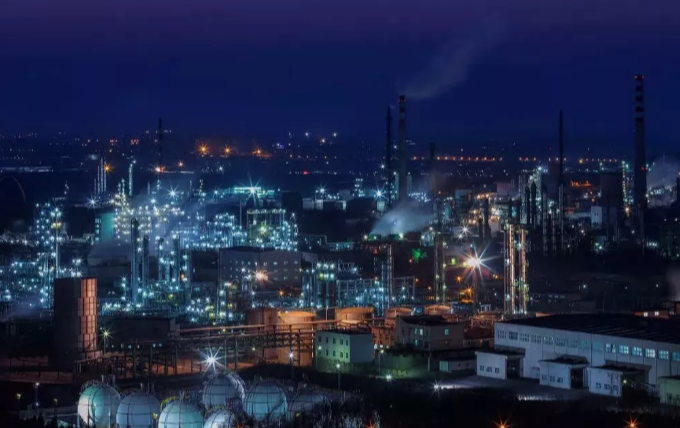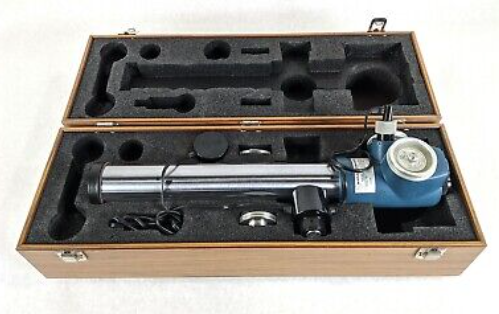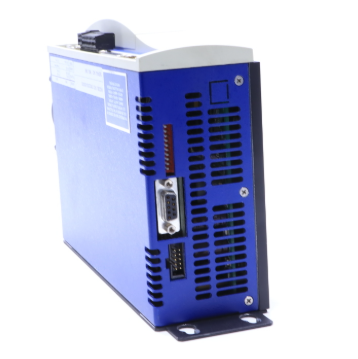Alternative analysis of coal chemical products
With the continuous reduction of the world's oil resources and the acceleration of the industrialization process, the situation of the increasingly tight world oil supply has seriously restricted the development of China's economy, and the problem of energy security has become increasingly prominent. China's energy structure shows the distinctive characteristics of "rich coal, poor oil and less gas" energy resources, which determines the energy pattern of our country's long-term dependence on coal, and the resource endowment determines that our country must develop coal chemical industry.
Coal chemical industry can be divided into traditional coal chemical industry and new coal chemical industry according to its product types. The so-called modern coal chemical industry, that is, the new coal chemical technology and product production based on alternative energy and petrochemical products developed in recent years, such as coal-to-oil, olefin, dimethyl ether, natural gas, ethylene glycol and other coal-based alternative energy-oriented industries. Traditional coal chemical industry usually refers to coal to coke, calcium carbide, methanol and other industries with a long history and mature technology. It is of great strategic significance to develop new coal chemical industry, especially coal-based alternatives such as coal-to-oil and coal-to-olefin.
Due to the late start of modern coal chemical industry, the current market share is small, there is no pricing power in the market, so modern coal chemical industry will face external and petrochemical industry competition, internal competition with similar enterprises in the industry. On the other hand, in order to replace the traditional petrochemical industry, modern coal chemical industry is very difficult to investigate from the aspects of technology maturity, energy efficiency, environment, carbon emissions, resource consumption, economy, etc. In addition, China's coal-rich areas are generally short of water, and far from the market, coupled with traffic bottlenecks and fragile ecological environment, so that the pattern becomes extremely complicated. This report mainly tries to make a brief analysis of the substitution of new coal chemical products from the perspective of upstream and downstream products, technology and economy, so as to provide some reference for investors.

1. Coal to olefin: the process is mature and can be developed on a scale
Olefins are important organic basic raw materials, among which ethylene is one of the world's largest production of chemical products, ethylene industry is the core of the petrochemical industry, and propylene is used to produce a variety of important organic chemical raw materials, polypropylene, synthetic resins, synthetic rubber and a variety of fine chemicals. The main methods of olefin production include coal to olefin, methanol to olefin, propane dehydrogenation to alefin and naphtha to olefin. In addition, there are still in the research stage of synthesis gas to olefin, natural gas to olefin.
Coal to olefin mainly refers to the production of ethylene, propylene and their polymers through coal as raw materials. In simple terms, the technology can be divided into four core processes: coal gasification, syngas purification, methanol synthesis and methanol to olefin. Obviously, coal to methanol is the most important part of the process. First, coal is gasified to make syngas; Then the syngas is converted; Then the converted syngas is purified; At last, the purified syngas is made into crude methanol and distilled to produce qualified methanol.
Methanol to olefin (MTO) and methanol to propylene (MTP) are two important new C1 chemical processes, which refer to the chemical technology of producing low carbon olefin by using methanol synthesized from coal or natural gas as raw material and using fluidized bed reaction form similar to catalytic cracking unit. The representative MTO process technologies in foreign countries are mainly UOP/Hydro, ExxonMobil technology, and Lurgi MTP technology. China's earliest research units engaged in the development of MTO technology are mainly led by Dalian Compound Institute, and developed DMTO patented technology, overcome the world's first set of coal to low-carbon olefin process technology engineering and achieve long-term stable operation and other global problems, and jointly industrialized with Shenhua Group, built the world's first set of million tons of coal-based methanol to olefin large-scale industrialization demonstration equipment.
According to the notice of the National Development and Reform Commission on "Strengthening the construction management of coal chemical projects to promote the healthy development of the industry", "generally, coal-to-oil projects with a scale of less than 3 million t/year, methanol and dimethyl ether projects with a scale of less than 1 million t/year, and coal-to-olefin projects with a scale of less than 600,000 t/year should not be approved." Therefore, when doing economic analysis, this requirement standard is the basis of production scale.
Taking the 600,000-ton/year coal-to-olefin project as an example, its total investment is about 15 billion yuan (excluding olefin deep processing equipment), and the unit product investment is about 25,000 yuan/ton of olefin. According to the current coal resource pit price situation, when the international crude oil price is higher than 60 US dollars/barrel, the coal-to-olefin project has a certain cost competitiveness. And with the rise of international crude oil prices, cost competitiveness continues to increase.

2. Coal-to-natural gas: Energy conversion efficiency is high, which is greatly affected by the price of syngas
Natural gas is a mixture of hydrocarbon and non-hydrocarbon gases naturally contained in the formation. It is mainly used as fuel to make carbon black, chemicals and liquefied petroleum gas. Propane and butane produced from natural gas are important raw materials for modern industry.
Coal-to-natural gas refers to the gasification of coal to produce syngas, and then methanation to produce alternative natural gas (SNG). Coal-derived natural gas has the same properties as conventional natural gas and can be used as an alternative product in various fields. The energy conversion efficiency of coal to natural gas is high, and the technology has been basically mature, and it is an effective way to produce oil substitute products. Coal-to-natural gas project investment is large, need to have a large economic scale, the current single series scale of 1.3 billion to 1.6 billion m3 / year, domestic projects under construction more use 3 series, a total scale of 4 billion m3 / year.
The process flow of coal-to-natural gas is as follows: raw coal reacts with high-purity oxygen and medium-pressure steam from the air separation unit in the coal gasification unit to produce crude gas, which is desulfurized and decarbonized by washing with low temperature methanol to make clean gas. The purified gas enters the methanation unit to synthesize methane and produce high-quality natural gas; In addition to the main product of natural gas, the purification plant produces acidic gas rich in hydrogen sulfide, which can be recycled to produce sulfur, and other branch lines also produce by-products such as naphtha, tar, and crude phenol. In this process, the most important wastewater treatment problems can be solved through the treatment of phenolamine recovery device, physical and chemical treatment of wastewater, biochemical treatment, advanced treatment and partial membrane treatment.
At present, China's natural gas production is mainly fossil energy extraction, coal-to-natural gas has just started, and has not formed a market supply, even if several projects under construction are put into production recently, its market share is small. Natural gas markets and pricing are dominated by governments and petrochemical production operators. From the price point of view, China's current fossil energy mining natural gas gate price (discount standard state) is about 1.20 yuan/m3, coal-to-natural gas can not compete with this. Taking the 4 billion m3 / year coal-to-natural gas project as an example, its total investment is about 22 billion yuan. The subscript table lists the competitive relationship between coal-to-natural gas and imported LNG. The improvement of natural gas price formation mechanism will be conducive to improving the economy of coal-to-natural gas projects.

3. Coal to ethylene glycol: the market gap is large, with a certain cost advantage
Ethylene glycol is an important chemical raw materials and strategic materials, mainly used in the production of polyester, polyester resin, hygroscopic agent, plasticizer, surfactant, synthetic fiber, cosmetics and explosives, and used as dyes, inks and other solvents, preparation of engine antifreeze, gas dehydrating agent, manufacturing resin, but also used in cellophane, fiber, leather, adhesive wetting agent. Coal to ethylene glycol is the production of ethylene glycol by coal instead of petroleum ethylene, and the commonly referred to coal to ethylene glycol technology mainly refers to oxalate ester method.
Oxalate method, that is, using coal as raw material, CO and H2 are obtained through gasification, transformation, purification and separation and purification, in which CO is combined into a catalytic couple and refined to produce oxalate, and then hydrogenated with H2 and refined to obtain polyester glycol. The complete set of technology in the implementation of Danyang, Jiangsu Province through the Chinese Academy of Sciences organization of the results appraisal, marking China in the world's first to achieve a full set of "coal to ethylene glycol" technical route and industrial application, is a world's first technology with independent intellectual property rights.
4. Coal-to-oil products: low conversion efficiency and large technical bottleneck
Coal-to-oil is a technology of producing oil and petrochemical products through chemical processing of coal as raw material. Coal to oil mainly includes direct coal liquefaction and indirect coal liquefaction two technical routes. Direct coal liquefaction refers to the direct synthesis of liquid hydrocarbon fuel by catalytic hydrogenation under high temperature and high pressure, and the removal of sulfur, nitrogen, oxygen and other atoms. The synthesis technology has poor adaptability to the types of coal, harsh reaction and operation conditions, high content of aromatics, sulfur, nitrogen and other impurities, low cetane number, and difficult to burn directly on the engine.
In the indirect liquefaction of coal, the raw coal is first gasification under the action of oxygen, and then the raw gas of carbon monoxide and hydrogen is obtained, that is, syngas. After sulfur removal, nitrogen removal and oxygen purification, the H2/CO ratio is adjusted to the appropriate value by water-gas reaction, and then Fischer-Tropsch (Fischer-Tropsch synthesis) catalyzed reaction, under a certain temperature, pressure and catalyst, H2 and CO are converted into linear hydrocarbons, water and a small amount of oxygen-containing organic compounds to synthesize liquid fuel.
5. Coal to DME: Cost advantage under economies of scale
As a basic chemical raw material, DME is easy to condense and vaporize, which makes DME have many unique uses in pharmaceutical, fuel, pesticide and other chemical industries. If used as a methylating agent to produce dimethyl sulfate,N, n-dimethylaniline, methyl acetate, acetic anhydride, ethylene dimethyl ester and ethylene can also be synthesized; It can also be used as alkylating agent, refrigerant, foaming agent, solvent, leaching agent, extraction agent, anesthetic, fuel, civilian composite ethanol and freon aerosol substitute.
Coal to DME is coal as raw material, through raw coal gasification, transformation, purification (desulfurization and decarbonization, etc.), methanol synthesis, the product methanol under the action of solid catalyst, dehydration reaction to DME. ZSM-5 molecular sieve containing γ-Al2O3/SiO2 is used as the dehydration catalyst at home and abroad. The reaction temperature is controlled at 280~340℃ and the pressure is 0.5-0.8MPa. The one-way conversion of methanol is between 70-85%, and the selectivity of dimethyl ether is greater than 98%.

Taking 1 million tons/year coal to DME project as an example, its total investment is about 8 billion yuan, and the unit product investment is about 8 000 yuan/ton of DME. As a substitute for petroleum, the fluctuation of international crude oil prices has a great impact on the cost competitiveness and economy of DME projects. When the international crude oil price is below 60 US dollars/barrel, even the construction of coal to DME projects in the pit is not competitive and economic.
To sum up, the economy of modern coal chemical industry, which replaces traditional petrochemical industry, is mainly affected by the price of crude oil. At the same time, the process equipment, raw materials, internal management, transportation conditions, terminal sales environment and other aspects of different projects of the same product are different, and their costs vary greatly. Overall, with the increase of oil prices, the economic competitiveness of coal-based chemical products (ethylene glycol, olefin) will be better than that of coal-based energy products (oil, dimethyl ether), that is, the profitability of coal-based chemical products is stronger than that of coal-based energy products.
Specifically, from the perspective of cost, when the oil price is less than 50 US dollars/barrel, the economic competitiveness of modern coal chemical industry is not ideal; When the oil price is 60~70 US dollars/barrel, the modern coal chemical industry has begun to become economically competitive, the order is: coal-to-olefin ≈ coal-to-ethylene glycol > coal-to-dimethyl ether > coal-to-oil; When the oil price is more than 70 US dollars/barrel, the economic competitiveness of modern coal chemical industry is further improved, and the benefit of coal to ethylene glycol is the best, followed by coal to olefin, and coal to oil and coal to DME are basically the same.
- EMERSON
- Honeywell
- CTI
- Rolls-Royce
- General Electric
- Woodward
- Yaskawa
- xYCOM
- Motorola
- Siemens
- Rockwell
- ABB
- B&R
- HIMA
- Construction site
- electricity
- Automobile market
- PLC
- DCS
- Motor drivers
- VSD
- Implications
- cement
- CO2
- CEM
- methane
- Artificial intelligence
- Titanic
- Solar energy
- Hydrogen fuel cell
- Hydrogen and fuel cells
- Hydrogen and oxygen fuel cells
- tyre
- Chemical fiber
- dynamo
- corpuscle
- Pulp and paper
- printing
- fossil
- FANUC
- Food and beverage
- Life science
- Sewage treatment
- Personal care
- electricity
- boats
- infrastructure
- Automobile industry
- metallurgy
- Nuclear power generation
- Geothermal power generation
- Water and wastewater
- Infrastructure construction
- Mine hazard
- steel
- papermaking
- Natural gas industry
- Infrastructure construction
- Power and energy
- Rubber and plastic
- Renewable energy
- pharmacy
- mining
- Plastic industry
- Schneider
- Kongsberg
- NI
- Wind energy
- International petroleum
- International new energy network
- gas
- WATLOW
- ProSoft
- SEW
- wind
- ADVANCED
- Reliance
- YOKOGAWA
- TRICONEX
- FOXBORO
- METSO
- MAN
- Advantest
- ADVANCED
- ALSTOM
- Control Wave
- AB
- AMAT
- STUDER
- KONGSBERG
- MOTOROLA
- DANAHER MOTION
- Bently
- Galil
- EATON
- MOLEX
- Triconex
- DEIF
- B&W
- ZYGO
- Aerotech
- DANFOSS
- KOLLMORGEN
- Beijer
- Endress+Hauser
- MOOG
- KB
- Moxa
- Rexroth


Email:wang@kongjiangauto.com

















































































































